Search Result
Results for "
free radical scavenging
" in MedChemExpress (MCE) Product Catalog:
5
Biochemical Assay Reagents
7
Isotope-Labeled Compounds
| Cat. No. |
Product Name |
Target |
Research Areas |
Chemical Structure |
-
- HY-N3220
-
|
|
Xanthine Oxidase
|
Metabolic Disease
|
|
Myricetin 3-O-galactoside inhibits xanthine oxidase (XO) activity, lipid peroxidation and scavenges the free radical. Myricetin 3-O-galactoside inhibits lipid peroxidation with an IC50 of 160 μg/mL. Antioxidant activity .
|
-
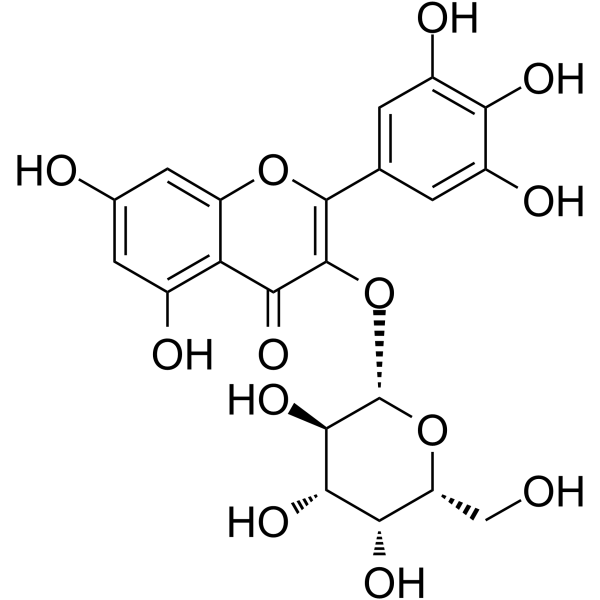
-
- HY-N7518
-
|
|
Others
|
Inflammation/Immunology
|
|
Eulophiol shows the 1,1-diphenyl-2-picrylhydrazyl (DPPH) free radical scavenging activity with an EC50 of 27.7μM. Antioxidant activity .
|
-

-
- HY-N3554
-
|
(+)-Catechol 7-β-D-xylopyranoside
|
Others
|
Others
|
|
Catechin-7-O-β-D-xylopyranoside is an antioxidant compound with strong DPPH free radical scavenging ability. Catechin-7-O-β-D-xylopyranoside can be extracted from birch inner bark and nepeta stem bark .
|
-

-
- HY-150585
-
|
|
Amyloid-β
Cholinesterase (ChE)
Tau Protein
|
Neurological Disease
|
|
BuChE-IN-5 (compound 25b) is a potent BuChE inhibitor with an IC50 value of 1.94 μM. BuChE-IN-5 efficiently inhibits aggregation Aβ and tau protein in Escherichia coli. BuChE-IN-5 also has free radical scavenging capacity and antioxidant activity. BuChE-IN-5 can be used for researching Alzheimer’s disease .
|
-

-
- HY-N0403
-
|
|
Apoptosis
|
Inflammation/Immunology
|
|
2,3,4',5-Tetrahydroxystilbene 2-O-β-D-glucoside (TSG) is an active product that can be extracted from Polygonum multiflorum Thunb. TSG has anti-inflammatory, antioxidative, anti-atherosclerotic, anti-apoptotic, and free radical scavenging activities, TSG is also indicated to facilitate long-term potentiation and learning and memory in both normal and pathological conditions .
|
-
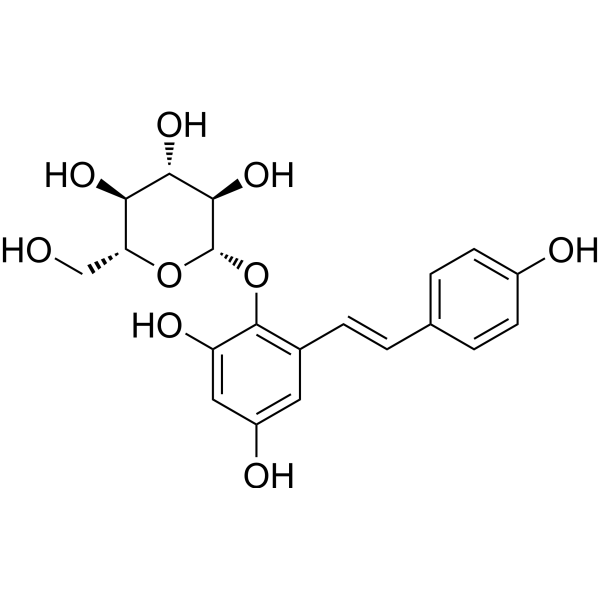
-
- HY-133183
-
|
|
Others
|
Others
|
|
Urolignoside is an antioxidant with free radical scavenging activity. Urolignoside potently scavenges DPPH radical, and exhibits antioxidant to β-carotene-lineoleate model .
|
-
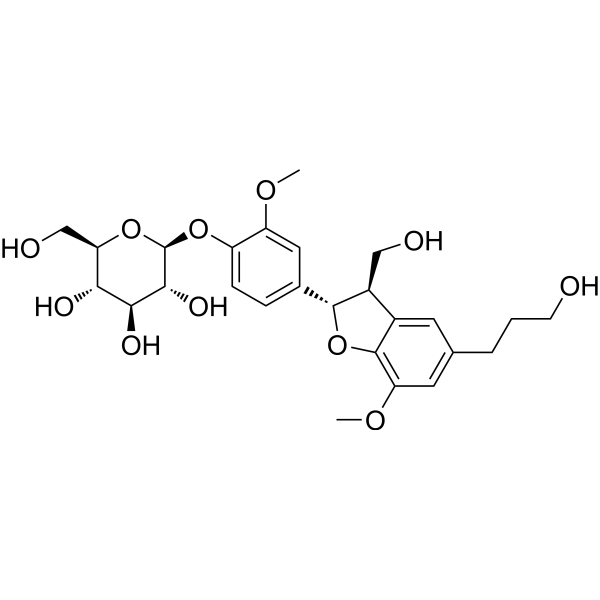
-
- HY-N0026
-
|
2'-AA
|
Others
|
Others
|
|
2'-Acetylacteoside is a phenylethanoid glycoside isolated from Brandisia hancei, inhibits free radical-induced hemolysis of red blood cells and exhibits free radical scavenging activity .
|
-
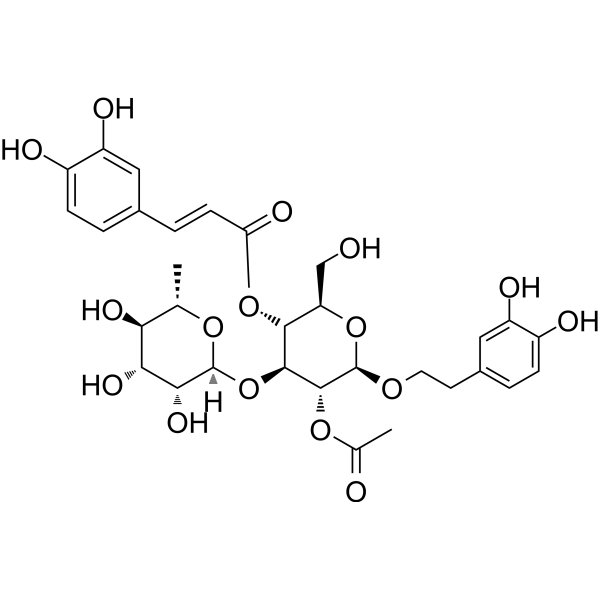
-
- HY-155346
-
|
|
Others
|
Others
|
|
Free radical scavenger 1 (compound 8) shows scavenging activity against the DPPH radical, with the IC50 of 43.39 μg/ml .
|
-
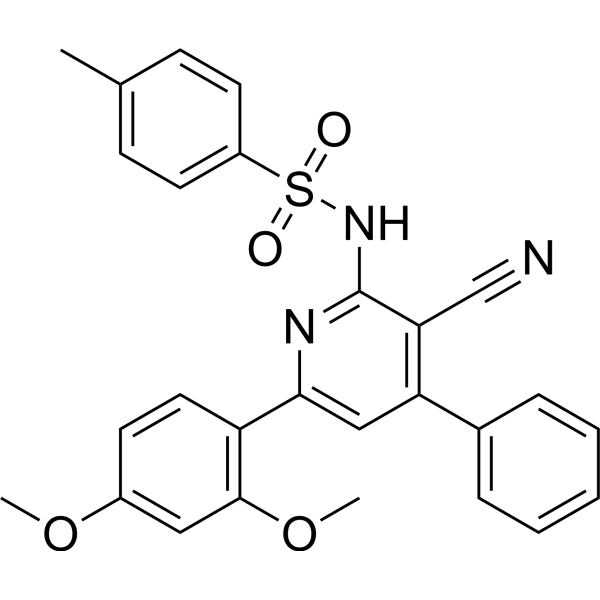
-
- HY-W067572
-
|
(-)-Stobadine
|
Reactive Oxygen Species
|
Cardiovascular Disease
|
|
Stobadine is a potent antioxidant and prevents free radical induced alterations in ER membrane fluidity. Stobadine can be used for effective cardio- and neuroprotectants development based on antioxidant or free radical scavenging mechanisms of action .
|
-
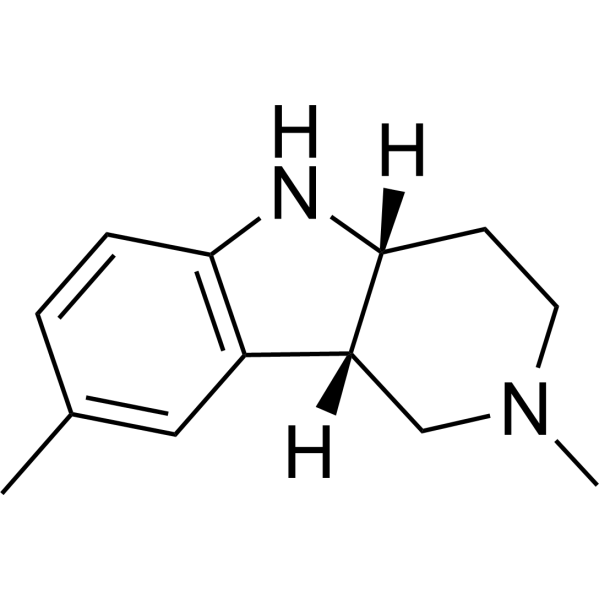
-
- HY-N0499A
-
|
|
Others
|
Inflammation/Immunology
|
|
Cyanidin, an antioxidant, has protective effect on DNA cleavage, free radical scavenging activity and significant inhibition of XO activity .
|
-
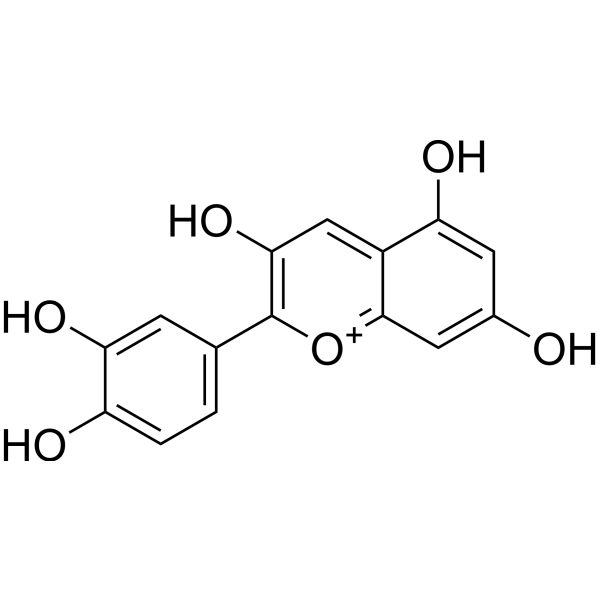
-
- HY-B1001
-
-
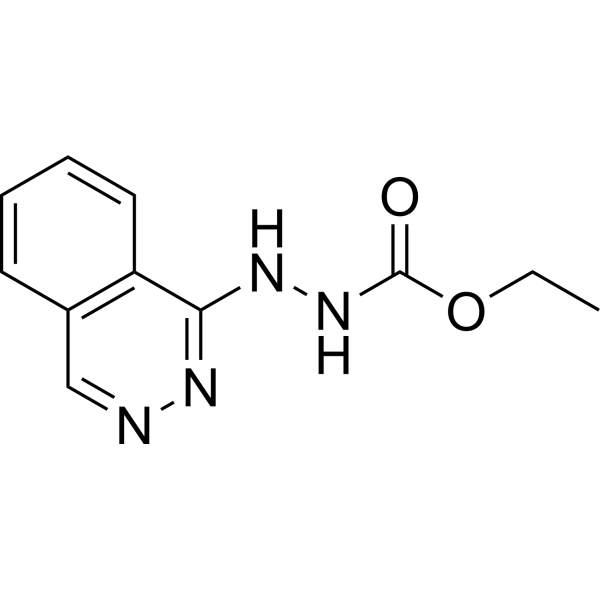
-
- HY-D0187
-
-
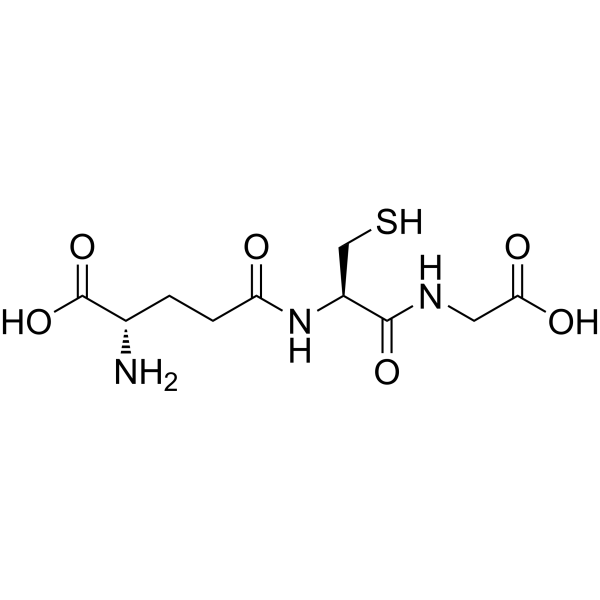
-
- HY-B1001A
-
-
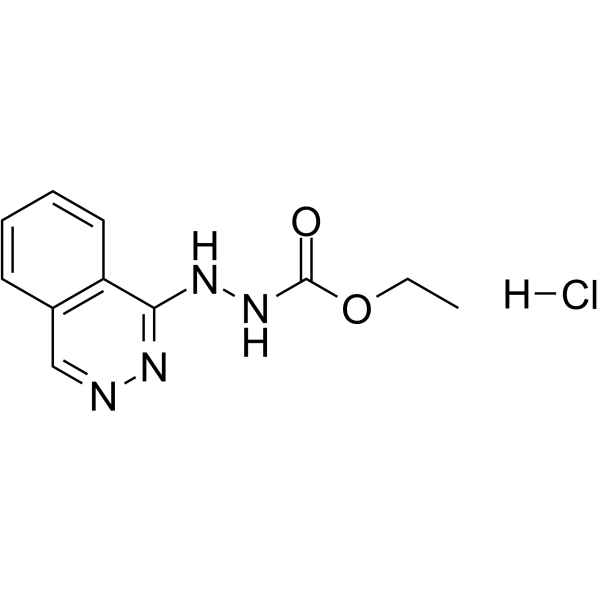
-
- HY-N4246
-
|
|
Others
|
Neurological Disease
|
|
Bacopaside I, a saponin isolated from Bacopa monnieri, exbibits antioxidant properties and free radical scavenging capacity and exerts antidepressant-like effect .
|
-
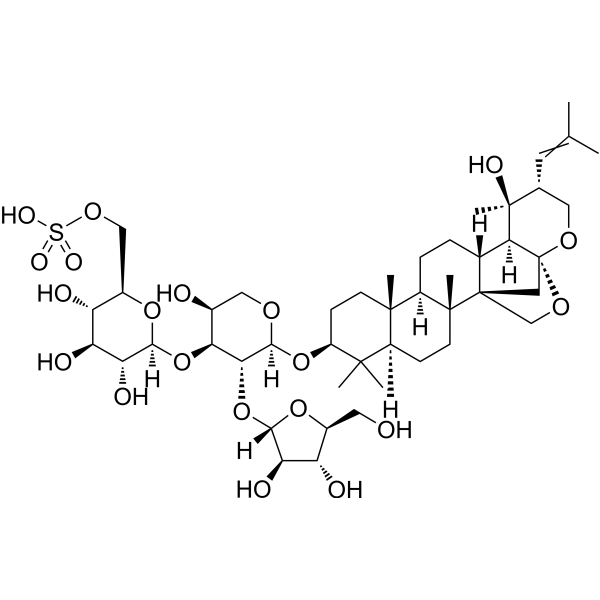
-
- HY-N2628
-
|
|
Others
|
Metabolic Disease
|
|
Erigeroside is as a derivatives of -glucose extracted from Satureja khuzistanica Jamzad. Erigeroside has good ability of anti-oxidation and scavenging oxidation free radical .
|
-

-
- HY-N8169
-
|
|
Others
|
Others
|
|
10-O-Trans-p-methoxycinnamoylcatalpol has antioxidant activity with the IC50 value of 0.37 μM/mL in DPPH free radical scavenging assay .
|
-

-
- HY-N10176
-
-

-
- HY-N1859
-
|
|
|
|
|
3'-O-Methylorobol, an antioxidant flavonoid, exhibits moderate antioxidant activity in the 2,2-diphenyl-1-picrylhydrazyl free radical scavenging assay .
|
-

-
- HY-W015913
-
-
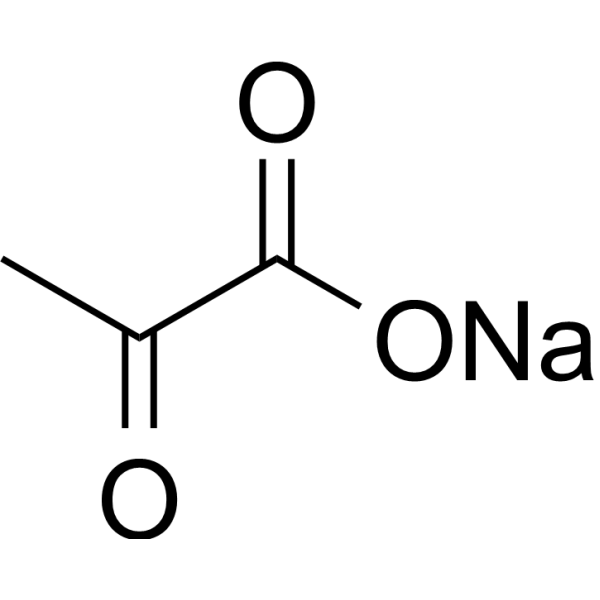
-
- HY-121811
-
-
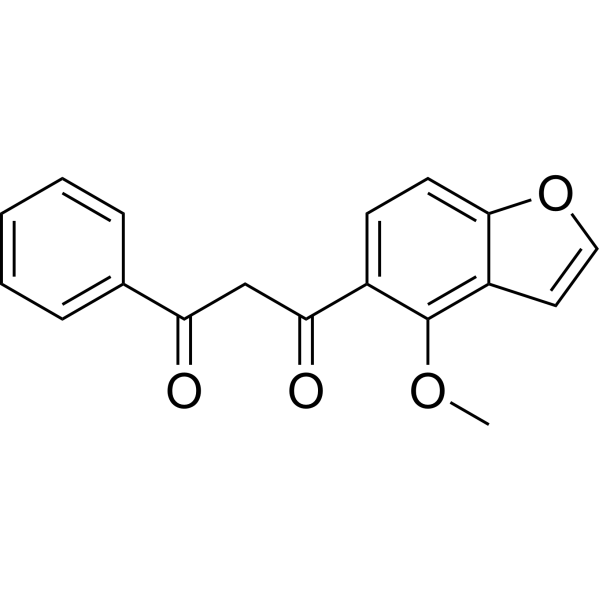
-
- HY-130294
-
|
|
Elastase
|
Inflammation/Immunology
|
|
Pyracrenic acid is an elastase inhibitor (IC50 = 2.42 µM), can be obtained from the bark of Pyracantha crenulata. Pyracrenic acid has DPPH free radical scavenging activity and anti-inflammatory activity .
|
-
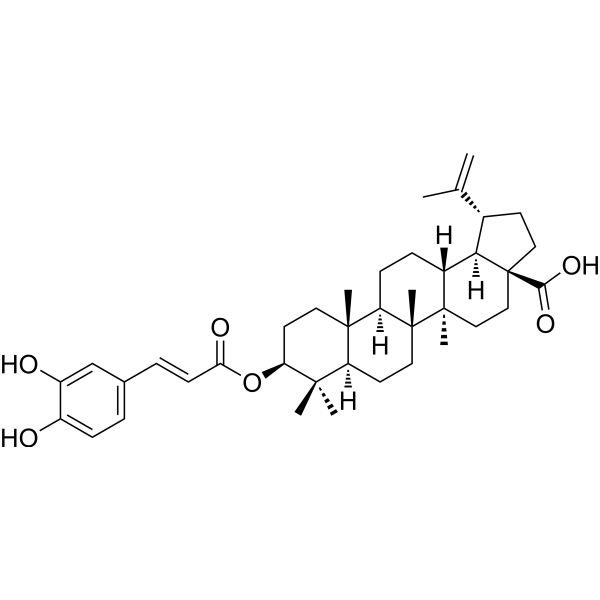
-
- HY-N8846
-
|
|
Fungal
|
Infection
|
|
dl-Aloesol is a natural product that can be isolated from fungus Aspergillus sp. Aspergillus sp metabolites has cytotoxic, antibacterial, free radical scavenging, anti-parasitic, antiviral and antiproliferative activities, etc .
|
-
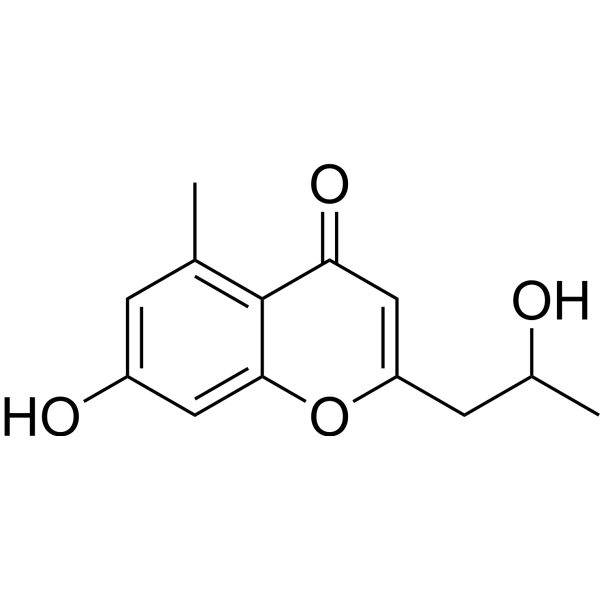
-
- HY-W274194
-
|
|
Others
|
Others
|
|
Antioxidant agent-7 (SD-7) is a benzodiazepine derivative with antioxidant activity with an IC50 value of 470 nM to scavenge DPPH (2,2-diphenyl-1-picrylhydrazyl) free radical .
|
-
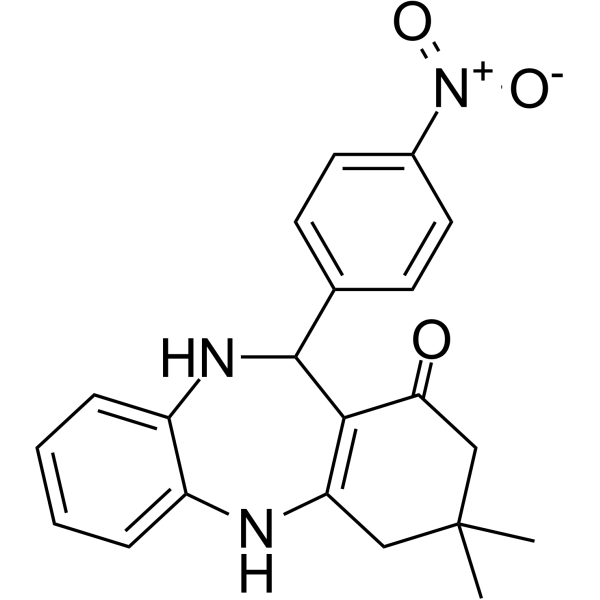
-
- HY-131803
-
|
|
Nucleoside Antimetabolite/Analog
|
Inflammation/Immunology
|
|
Urolignoside is an antioxidant with free radical scavenging activity. Urolignoside potently scavenges DPPH radical, and exhibits antioxidant to β-carotene-lineoleate model . 3'-Azido-3'-deoxyguanosine is a click chemistry reagent, it contains an Azide group and can undergo copper-catalyzed azide-alkyne cycloaddition reaction (CuAAc) with molecules containing Alkyne groups. Strain-promoted alkyne-azide cycloaddition (SPAAC) can also occur with molecules containing DBCO or BCN groups.
|
-
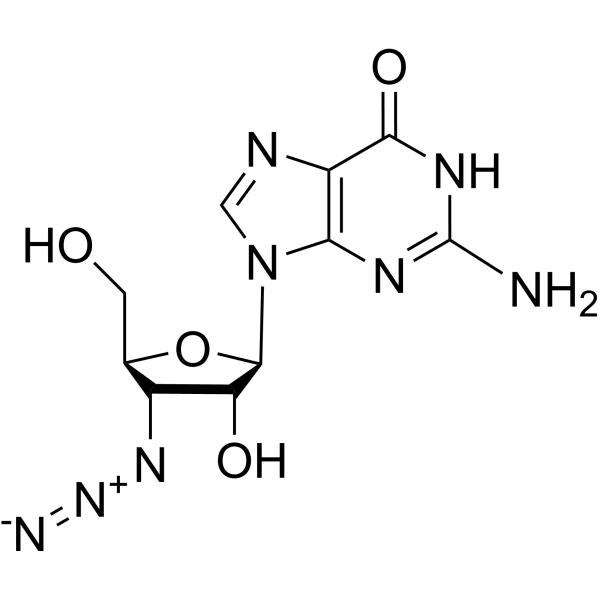
-
- HY-N1417
-
Sesamol
1 Publications Verification
|
|
|
|
Sesamol is a constituent of sesame oil. Sesamol shows a free radical scavenging activity. Sesamol shows an IC50=5.95±0.56 μg/mL in the DPPH assay. Anti-oxidant activities . Anticancer activities .
|
-
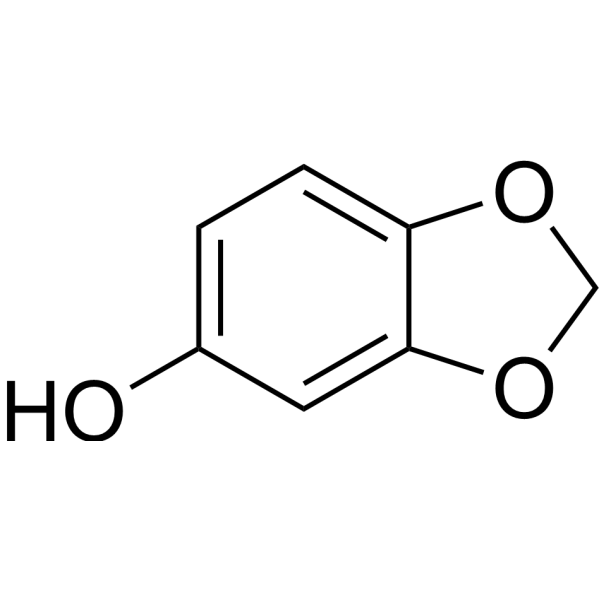
-
- HY-N1521
-
|
Lantadene A
|
Others
|
Inflammation/Immunology
|
|
Rehmannic acid (lantadene A) is a compound isolated from Lantana camara. Rehmannic acid shows considerable in vitro antioxidant, free radical scavenging capacity activities in a dose dependant manner. Rehmannic acid is a promising candidate for use as an antioxidant and hepatoprotective agent .
|
-
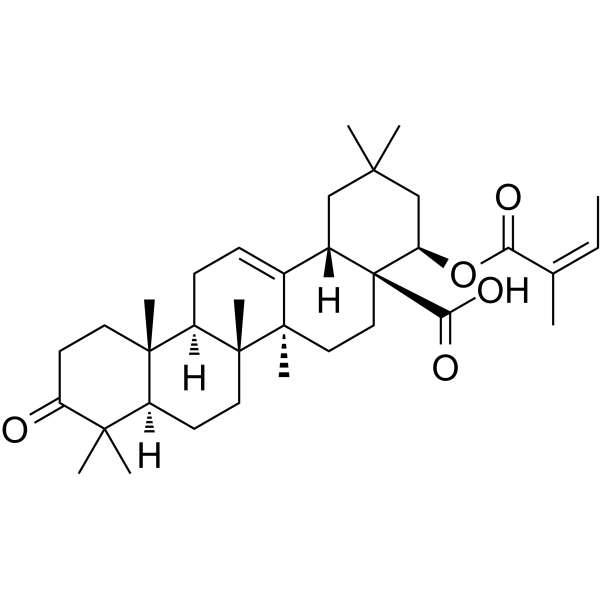
-
- HY-D0187S
-
-

-
- HY-B0704
-
|
Nonanedioic acid
|
Antibiotic
Endogenous Metabolite
|
Inflammation/Immunology
|
|
Azelaic acid is a nine-carbon dicarboxylic acid. Azelaic acid has antimicrobial activity against Propionibacterium acnes and Staphylococcus epidermidis through inhibition of microbial cellular prorein synthesis. Azelaic acid has hypopigmentation action resulting from its ability to scavenge free radicals .
|
-

-
- HY-N3138
-
|
|
Bacterial
|
Infection
|
|
Ombuoside is a glycoside ombuoside isolated from Gynostemma pentaphyllum.Ombuoside has antimicrobial activity against several strains of gram-positive and gram-negative bacteria and the yeast Candida albicans . Ombuoside has antioxidant effects by scavenging free radicals and ROS .
|
-
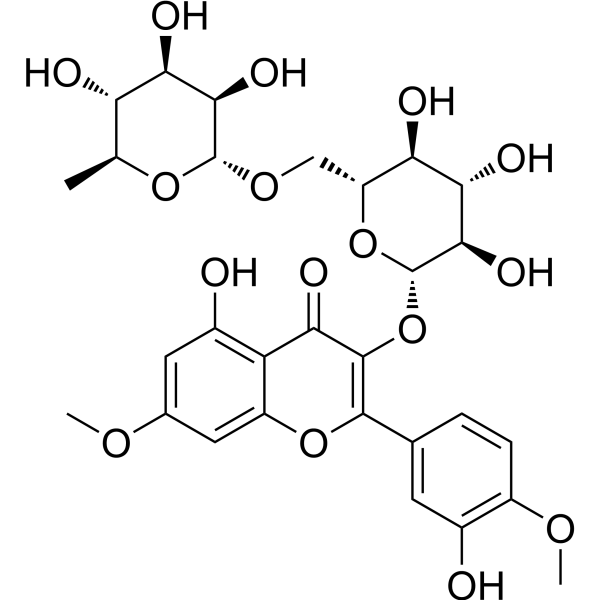
-
- HY-W714006
-
|
|
Others
|
Metabolic Disease
|
|
Cochliodinol (compound 1) is a metabolite derived from the Apis mellifera ligustica. Cochliodinol has strong free radical scavenging activity of 2, 2-diphenyl-1-picrohydrazine (DPPH) (IC50=3.06 μg/mL) .
|
-
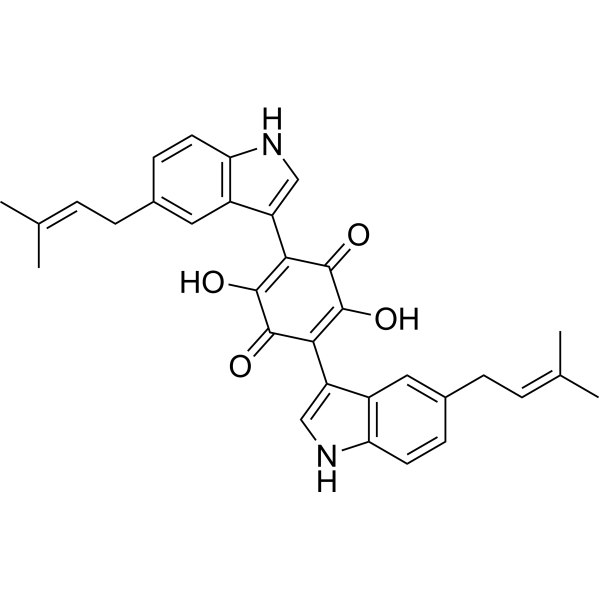
-
- HY-N0513
-
|
|
Others
|
Cardiovascular Disease
Inflammation/Immunology
|
|
Loganic acid is an iridoid isolated from cornelian cherry fruits. Loganic acid can modulate diet-induced atherosclerosis and redox status. Loganic acid has strong free radical scavenging activity and remarkable cyto-protective effect against heavy metal mediated toxicity .
|
-
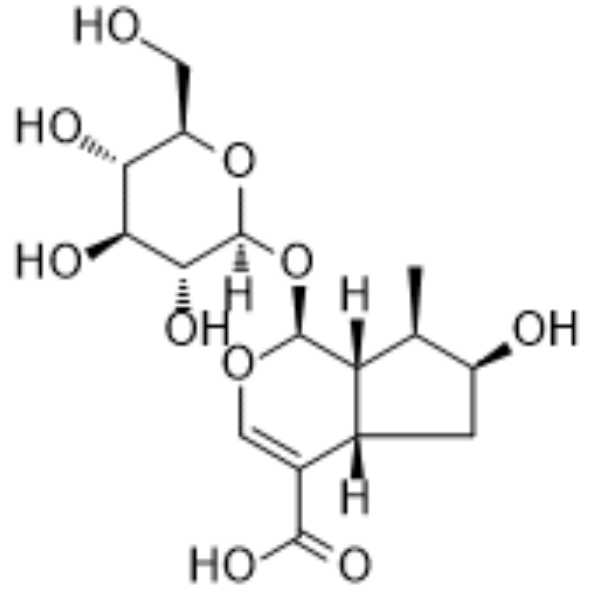
-
- HY-N8375
-
|
|
Others
|
Metabolic Disease
|
|
Sieboldin is a dihydrochalcone, which inhibits the production of advanced glycation end products (AGE) produced by bovine serum albumins (BSA), has free radical scavenging activity and cytotoxicity in cancer cell lines, and is also used to capture of methylglyoxal (MGO) from Malus baccata .
|
-

-
- HY-N1994
-
|
|
|
|
|
Swertianine is a hydroxyexanthone that can be isolated from Swertia decussata. Swertianine has antioxidant activity by inhibiting lipid peroxidation, scavenging DPPH and superoxide free radicals. Swertianine also inhibits γ-ray induced DNA damage of pBR322 with protective effect .
|
-
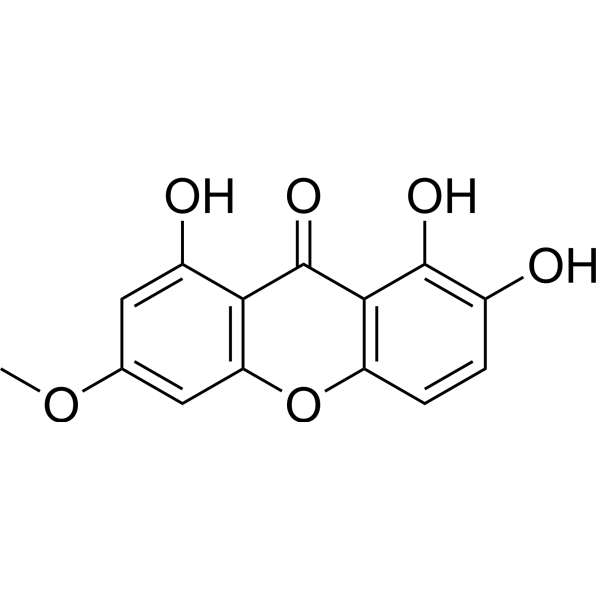
-
- HY-N10294
-
|
|
HIV
|
Infection
Inflammation/Immunology
|
|
Epicoccone B, firstly reported from C. globosum, exhibits the DPPH free radical scavenging ability with IC50 value of 10.8 μM, and has potent α-glucosidase inhibition with IC50 value of 27.3 μM. Anti-HIV activity .
|
-

-
- HY-112053
-
|
2,2-Diphenyl-1-picrylhydrazyl
|
Others
|
Metabolic Disease
|
|
DPPH (2,2-Diphenyl-1-picrylhydrazyl) is a stable free radical that can be used to measure the radical scavenging activity of antioxidants. The odd electron of nitrogen atom in DPPH is reduced by receiving a hydrogen atom from antioxidants to the corresponding hydrazine. DPPH method may be utilized in aqueous and nonpolar organic solvents and can be used to examine both hydrophilic and lipophilic antioxidants .
|
-

-
- HY-P1934A
-
|
|
Fungal
IFNAR
Reactive Oxygen Species
|
Infection
Inflammation/Immunology
Cancer
|
|
Cyclo(L-Phe-L-Pro), isolated from Pseudomonas fluorescens and Pseudomonas alcaligenes cell-free culture supernatants is an antifungal cyclic dipeptide . Cyclo(L-Phe-L-Pro) inhibits IFN-β production by interfering with retinoic-acid-inducible gene-I (RIG-I) activation . Cyclo(L-Phe-L-Pro) exhibits free-radical scavenging activity with the IC50 of 24 µM in the DPPH assay .
|
-
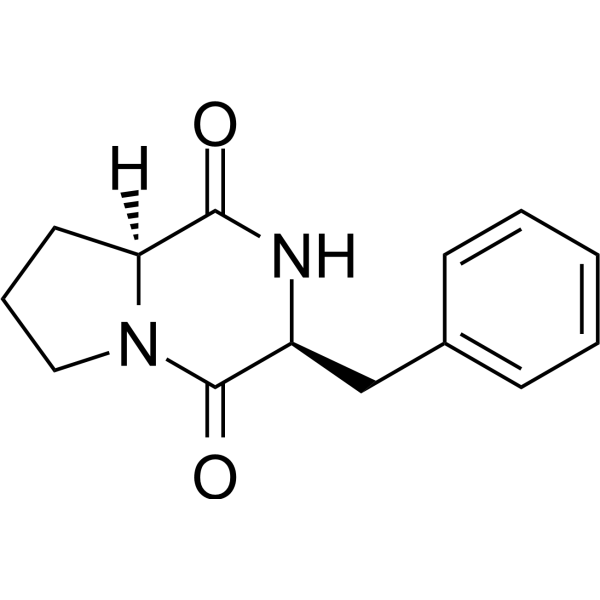
-
- HY-100768
-
HTHQ
2 Publications Verification
1-O-hexyl-2,3,5-trimethylhydroquinone; HX-1171; BTT-105
|
Reactive Oxygen Species
|
Cancer
|
|
HTHQ (1-O-hexyl-2,3,5-trimethylhydroquinone) is a potent lipophilic phenolic antioxidant. HTHQ has considerable anti-oxidative activity by directly reacting with reactive oxygen species (ROS) and scavenging ROS to form more stable free radicals .
|
-
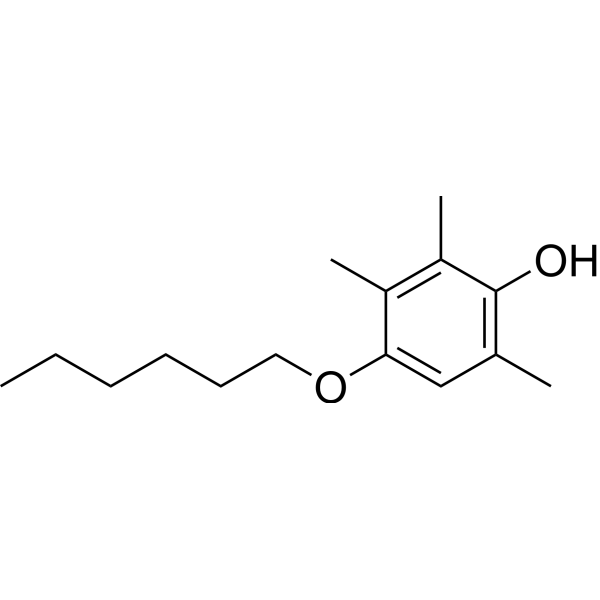
-
- HY-146172
-
|
|
Reactive Oxygen Species
|
Inflammation/Immunology
Cancer
|
|
Antioxidant agent-3 (Compound 14q), an potent antioxidant, displays potent DPPH radicals scavenging activity and ABTS + scavenging activity with IC50s of 26.58 and 30.31 μM, respectively. Antioxidant agent-3 (Compound 14q) increases reactive oxygen species (ROS), superoxide dismutase (SOD) and glutathione (GSH), and reduced lactate dehydrogenase (LDH) in H2O2-treated HepG2 cells .
|
-

-
- HY-W015913S
-
|
Sodium pyruvate-13C3
|
Reactive Oxygen Species
Endogenous Metabolite
|
Metabolic Disease
|
|
Sodium 2-oxopropanoate- 13C3 is the 13C-labeled Sodium 2-oxopropanoate. Sodium 2-oxopropanoate (Sodium pyruvate), a three-carbon metabolite of Glucose, is a compound produced in the glycolytic pathway. Sodium 2-oxopropanoate is a free radical scavenger that can scavenge ROS[1][2].
|
-

-
- HY-W015913S1
-
|
Sodium pyruvate-d3
|
Endogenous Metabolite
Reactive Oxygen Species
|
Metabolic Disease
|
|
Sodium 2-oxopropanoate-d3 is the deuterium labeled Sodium 2-oxopropanoate[1]. Sodium 2-oxopropanoate (Sodium pyruvate), a three-carbon metabolite of Glucose, is a compound produced in the glycolytic pathway. Sodium 2-oxopropanoate is a free radical scavenger that can scavenge ROS[2][3].
|
-
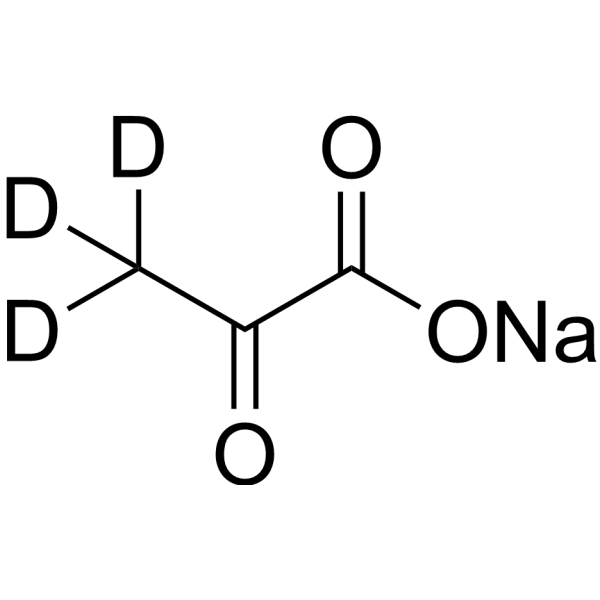
-
- HY-W015913S3
-
|
|
Endogenous Metabolite
Reactive Oxygen Species
|
Metabolic Disease
|
|
Sodium 2-oxopropanoate- 13C is the 13C labeled Sodium 2-oxopropanoate[1]. Sodium 2-oxopropanoate (Sodium pyruvate), a three-carbon metabolite of Glucose, is a compound produced in the glycolytic pathway. Sodium 2-oxopropanoate is a free radical scavenger that can scavenge ROS[2][3].
|
-
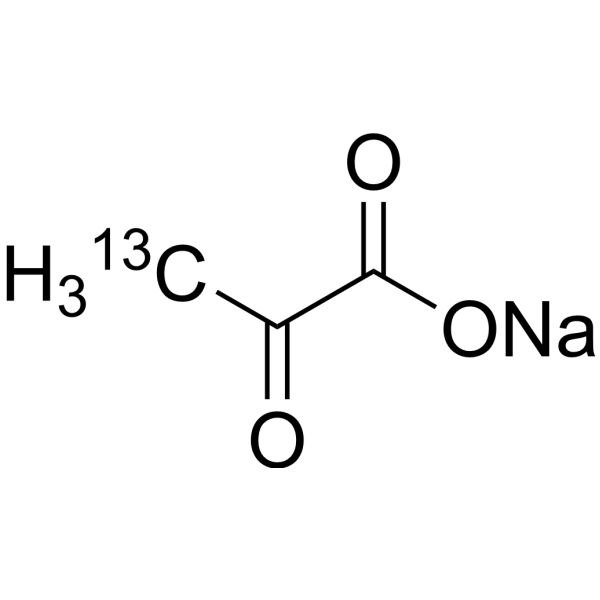
-
- HY-129064
-
|
SOD
|
SOD
|
Inflammation/Immunology
Cancer
|
|
Superoxide dismutase, Porcine erythrocytes (SOD) is the only antioxidant enzyme that scavenges the superoxide anion by converting this free radical to oxygen and hydrogen peroxide, thus preventing peroxynitrite production and further damage. Superoxide dismutase, Porcine erythrocytes is extensively researched and used in anti-inflammatory, antitumor, radiation protection, and antisenility applications .
|
-
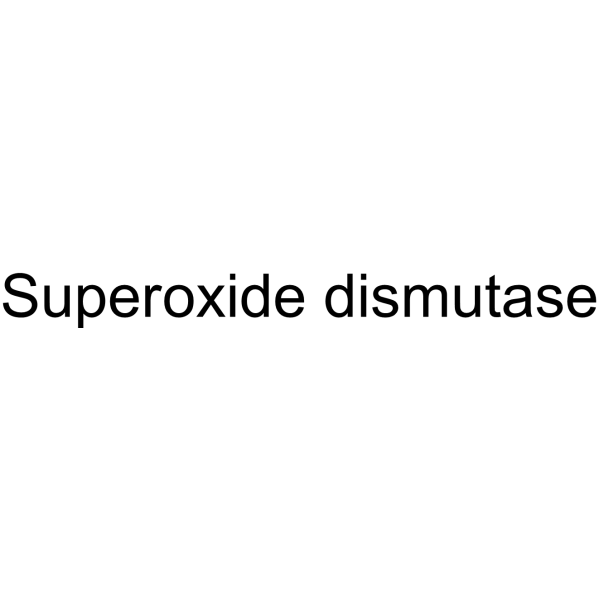
-
- HY-N1719
-
|
2α,3α,23-Trihydroxyolean-12-en-28-oic acid
|
|
|
|
Isoarjunolic acid (2α,3α,23-Trihydroxyolean-12-en-28-oic acid) is a triterpenoid, can be isolated from the stems of Cornus kousa. Isoarjunolic acid could have free radical scavenging activity and elastase inhibition activity .
|
-

-
- HY-W015913S4
-
|
|
Endogenous Metabolite
Reactive Oxygen Species
|
Metabolic Disease
|
|
2-Oxopropanoate- 13C5 (sodium) is the 13C labeled Sodium 2-oxopropanoate[1]. Sodium 2-oxopropanoate (Sodium pyruvate), a three-carbon metabolite of Glucose, is a compound produced in the glycolytic pathway. Sodium 2-oxopropanoate is a free radical scavenger that can scavenge ROS[2][3].
|
-
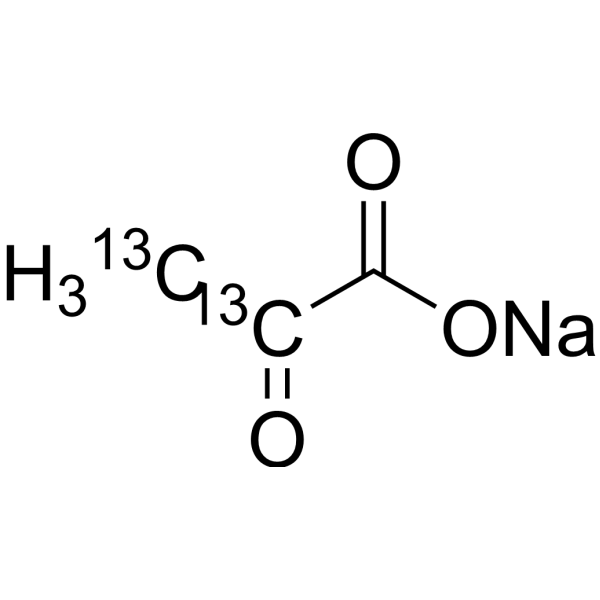
-
- HY-N7648
-
|
Atherospermine
|
Parasite
|
Infection
|
|
Atherosperminine(Atherospermine)is a nature occurring alkaloid, has antiplasmodial activities in vitro, with an IC50 of 5.80 μM. Atherosperminine is a good reductant with the ability to chelate metals. Atherosperminine has scavenging activity towards the free radical DPPH, with an IC50 of 29.56 µg/mL. Atherosperminine exerts a non-specific relaxant effect on the trachealis .
|
-
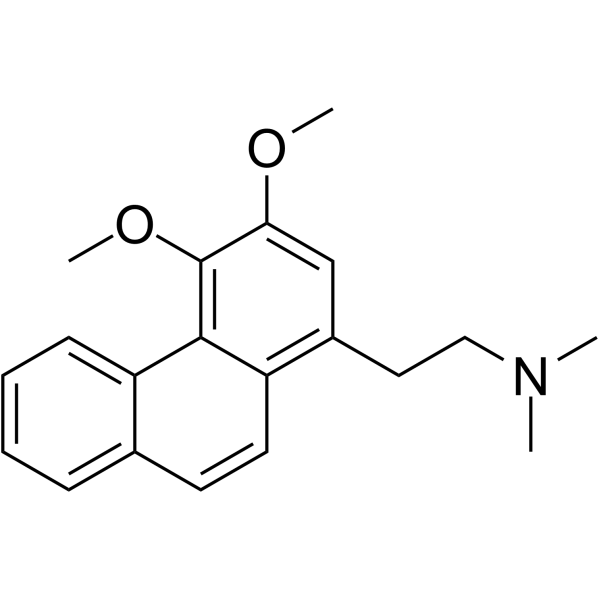
-
- HY-N3421
-
|
|
Interleukin Related
TNF Receptor
Influenza Virus
|
Infection
Inflammation/Immunology
Cancer
|
|
Koaburaside is a cytoprotective and anti-inflammatory natural compound. Koaburaside shows antioxidant activity with an IC50 of 9.0 μM for DPPH-free radical scavenging assay. Koaburaside inhibits histamine release and expressions of IL-6 and TNF-α in human mast cells. Koaburaside also effectively inhibits influenza A neuraminidase .
|
-
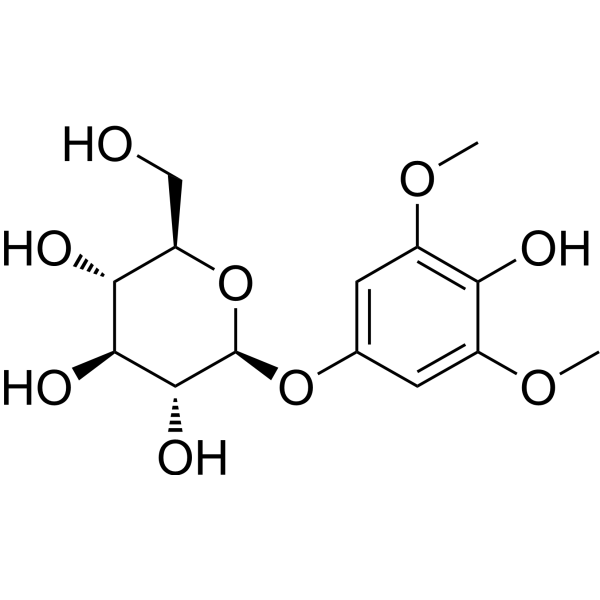
-
- HY-124953
-
|
|
MAP3K
Apoptosis
|
Cancer
|
|
7,3',4'-Trihydroxyisoflavone, a major metabolite of Daidzein, is an ATP-competitive inhibitor of Cot (Tpl2/MAP3K8) and MKK4. 7,3',4'-Trihydroxyisoflavone has anticancer, anti-angiogenic, chemoprotective, and free radical scavenging activities .
|
-
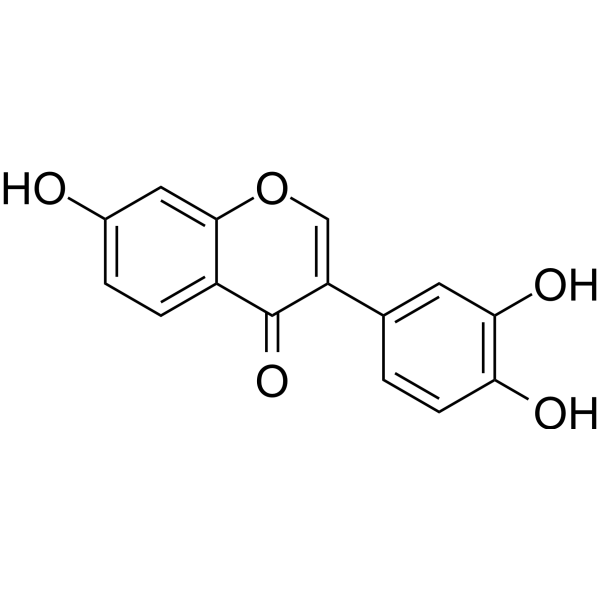
-
- HY-P4531
-
|
|
Opioid Receptor
|
Neurological Disease
|
|
H-Ser-Tyr-OH is a dipeptide consisting of glutamic acid, glycine and histidine. H-Ser-Tyr-OH can form a copper(II) complex with copper ions to form a strong free radical scavenging activity. H-Ser-Tyr-OH also increases the intracellular uptake of the delta opioid receptor ligand deltorphin .
|
-
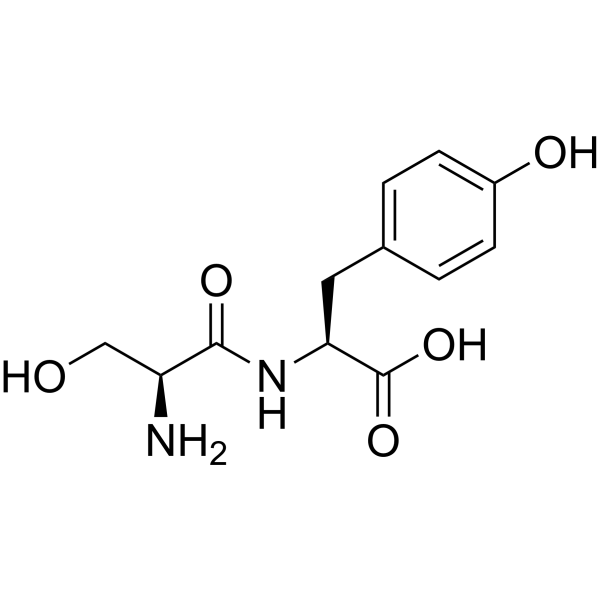
-
- HY-149313
-
|
|
Amylases
|
Metabolic Disease
|
|
α Amylase-IN-1 (Compound 11) is an α-Amylase inhibitor with an IC50 value of 0.5509 μM. α Amylase-IN-1 has antioxidant activity with an IC50 value of 53.49 μM for scavenging DPPH free radicals. IC50 can be used in the study of diabetes and oxidative stress-related diseases.
|
-
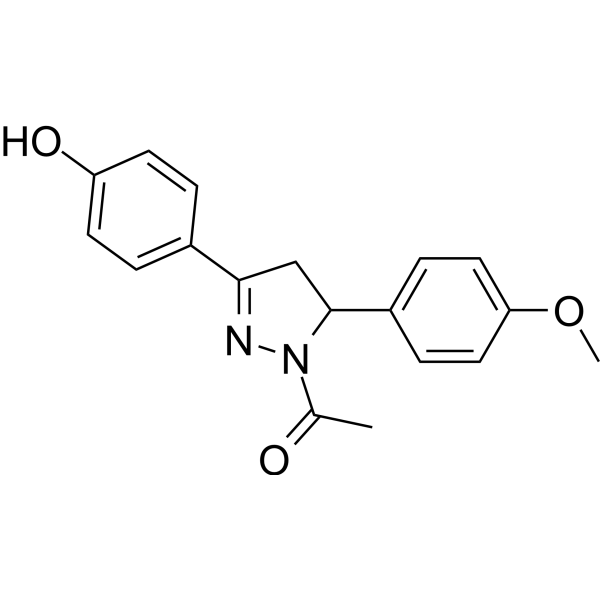
-
- HY-D0187S6
-
|
GSH-15N; γ-L-Glutamyl-L-cysteinyl-glycine-15N
|
Isotope-Labeled Compounds
|
Others
|
|
L-Glutathione reduced- 15N (GSH- 15N; γ-L-Glutamyl-L-cysteinyl-glycine- 15N) is 15N-labeled L-Glutathione reduced (HY-D0187). L-Glutathione reduced (GSH; γ-L-Glutamyl-L-cysteinyl-glycine) is an endogenous antioxidant that scavenges oxygen free radicals.
|
-

- HY-142125
-
|
|
Xanthine Oxidase
Reactive Oxygen Species
Apoptosis
|
Inflammation/Immunology
Cancer
|
|
Broussochalcone A is an antioxidant and an inhibitor of Xanthine Oxidase (IC50=2.21 μM), with free radical scavenging activity. Broussochalcone A inhibits iron-induced lipid peroxidation and nitric oxide synthesis in lipopolysaccharide (LPS) -activated macrophages. Broussochalcone A also induces Apoptosis of human renal carcinoma cells by increasing ROS levels and activating FOXO3 signaling pathways .
|
-
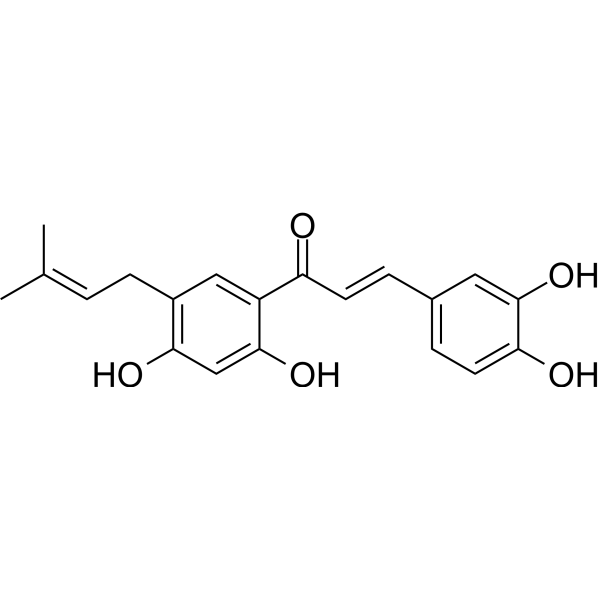
- HY-N6937
-
|
(R,R)-SDG; (R,R)-LGM2605
|
Others
|
Inflammation/Immunology
|
|
(R,R)-Secoisolariciresinol diglucoside ((R,R)-SDG) is the minor isomer of Secoisolariciresinol diglucoside in flaxseed. (R,R)-Secoisolariciresinol diglucoside ((R,R)-SDG) possesses antioxidant and free radical scavenging activities and DNA-radioprotective properties. (R,R)-Secoisolariciresinol diglucoside ((R,R)-SDG) inhibits myeloperoxidase (MPO) activity by suppressing both the peroxidase and chlorination cyclesin inflammatory cells .
|
-
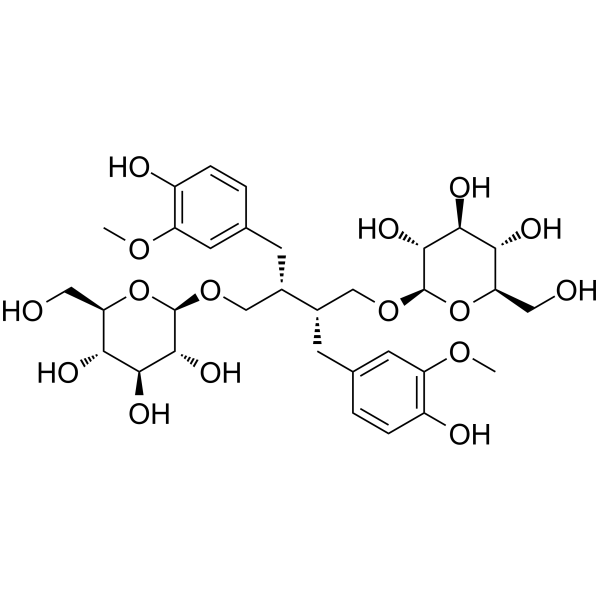
- HY-128463
-
|
|
COX
Reactive Oxygen Species
|
Neurological Disease
Metabolic Disease
Inflammation/Immunology
|
|
N-tert-Butyl-α-phenylnitrone is a nitrone-based free radical scavenger that forms nitroxide spin adducts. N-tert-Butyl-α-phenylnitrone inhibits COX2 catalytic activity. N-tert-Butyl-α-phenylnitrone has potent ROS scavenging, anti-inflammatory, neuroprotective, anti-aging and anti-diabetic activities, and can penetrate the blood-brain barrier .
|
-
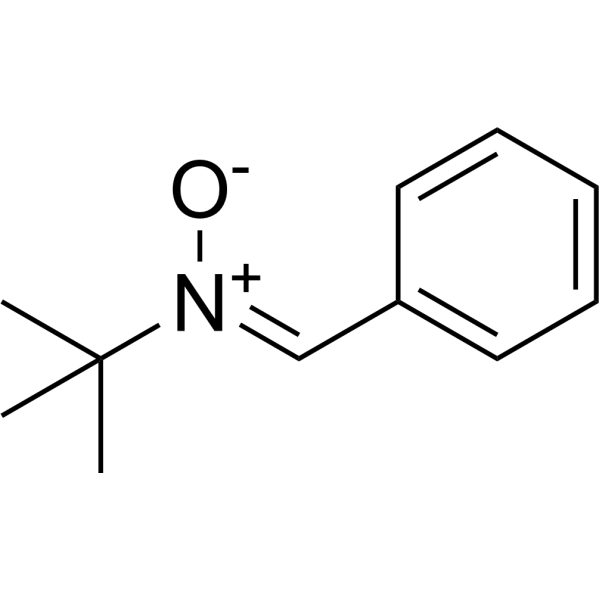
- HY-116866
-
|
|
Lipoxygenase
Fungal
|
Infection
Inflammation/Immunology
|
|
Sclerotiorin is a reversible and uncompetitive inhibitor against soybean lipoxygenase-1 (LOX-1) (IC50: 4.2 μM). Sclerotiorin also shows antioxidant activity by scavenging free radical (ED50: 0.12 μM), and nonenzymatic lipid peroxidation inhibition activity. Sclerotiorin has antifungal activity, and also inhibits platelet aggregation. Sclerotiorin can be purified from the fermented broth of Penicillium frequentans .
|
-
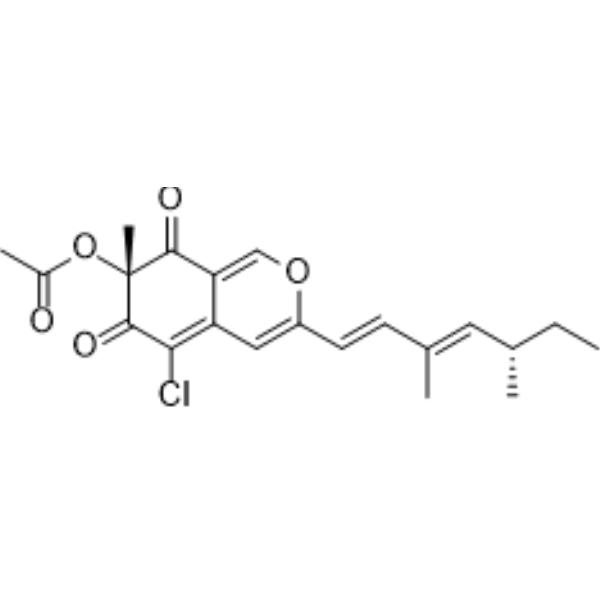
- HY-W018643
-
|
Methyl ferulate
|
p38 MAPK
Autophagy
|
Neurological Disease
Inflammation/Immunology
Cancer
|
|
Ferulic acid methyl ester (Methyl ferulate) is a derivative of ferulic acid, isolated from Stemona tuberosa, with anti-inflammatory and antioxidant properties . Ferulic acid methyl ester is a cell membrane and brain permeable compound, shows free radical scavenging ability, used in the research of neurodegenerative disorders . Ferulic acid methyl ester inhibits COX-2 expression, blocks p-p38 and p-JNK in primary bone marrow derived-macrophages .
|
-
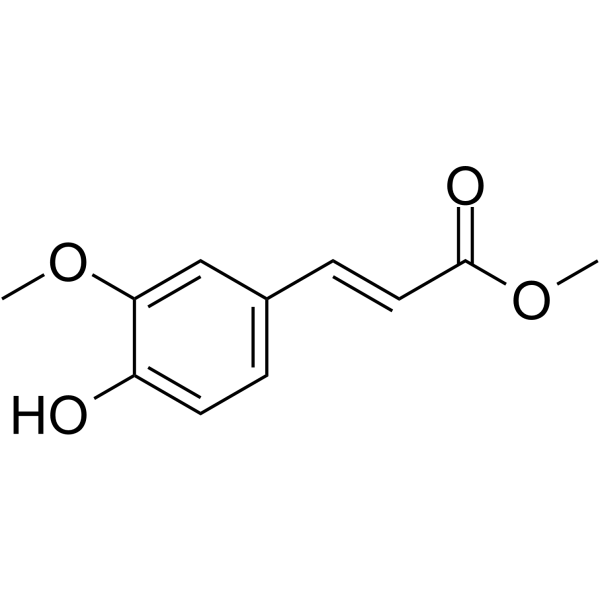
- HY-N11526
-
|
|
Others
|
Inflammation/Immunology
|
|
3-Hydroxy-2-(palmitoyloxy)propyl stearat is a non-volatile compound. 3-Hydroxy-2-(palmitoyloxy)propyl stearat can be isolated from less polar fractions of the brown macroalga Fucus virsoides J. Agardh. This part of the substance has a good ability to scavenge free radicals and has a protective effect on the oxidative stress induced by hydrogen peroxide in zebrafish embryos .
|
-
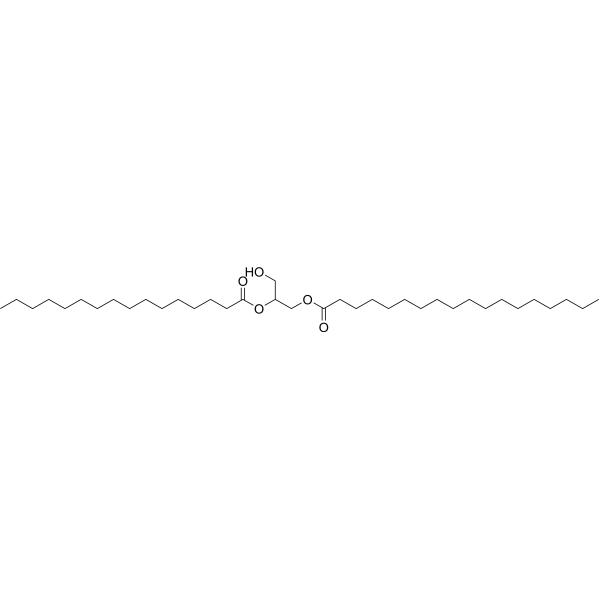
- HY-N0241
-
|
|
Cholinesterase (ChE)
|
Metabolic Disease
|
|
Rhodionin, isolated from the root of Rhodiola crenulata, is a specific non-competitive cytochrome P450 2D6 inhibitor with an IC50 of 0.761 μM and a Ki of 0.769 μM . Rhodionin exhibits potent, dose-dependent inhibitory effects on acetylcholinesterase (AChE) with IC50 ranged from 57.50 to 2.43 μg/mL . Rhodionin exhibits potent DPPH free radical scavenging activities, with an IC50 of 19.49 μM .
|
-
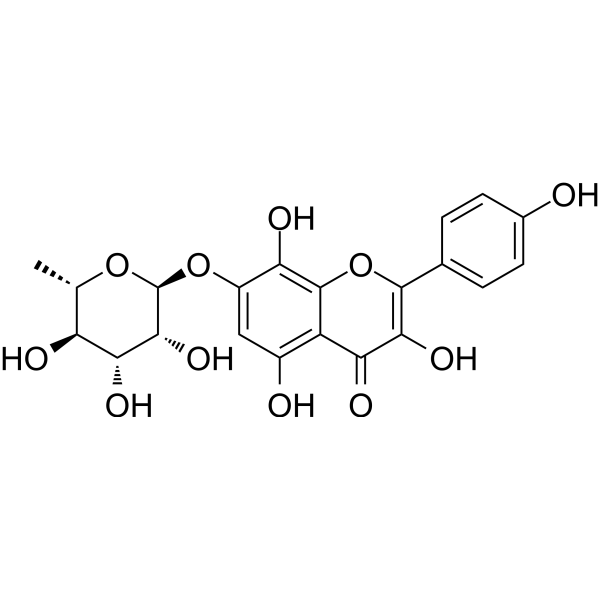
- HY-B0639
-
|
WR2721
|
MDM-2/p53
HIF/HIF Prolyl-Hydroxylase
|
Cancer
|
|
Amifostine (WR2721) is a broad-spectrum cytoprotective agent and a radioprotector. Amifostine selectively protects normal tissues from damage caused by radiation and chemotherapy. Amifostine is potent hypoxia-inducible factor-α1 (HIF-α1) and p53 inducer. Amifostine protects cells from damage by scavenging oxygen-derived free radicals. Amifostine reduces renal toxicity and has antiangiogenic action .
|
-
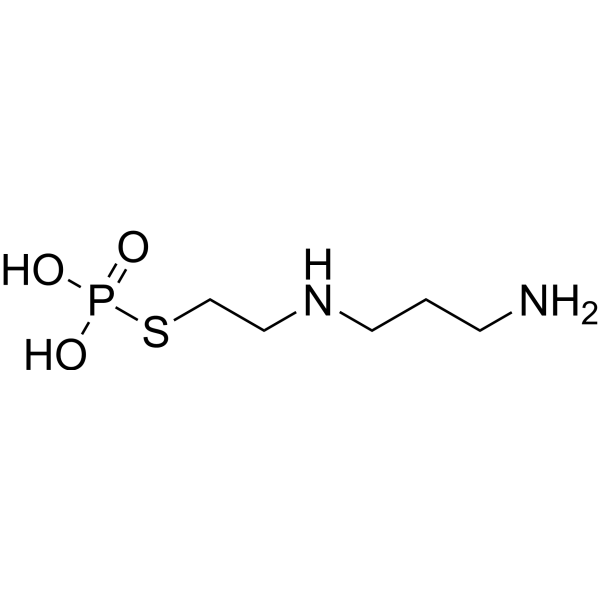
- HY-B0639A
-
|
WR2721 trihydrate
|
MDM-2/p53
HIF/HIF Prolyl-Hydroxylase
|
Cancer
|
|
Amifostine trihydrate (WR2721 trihydrate) is a broad-spectrum cytoprotective agent and a radioprotector. Amifostine trihydrate selectively protects normal tissues from damage caused by radiation and chemotherapy. Amifostine trihydrate is potent hypoxia-inducible factor-α1 (HIF-α1) and p53 inducer. Amifostine trihydrate protects cells from damage by scavenging oxygen-derived free radicals. Amifostine trihydrate reduces renal toxicity and has antiangiogenic action .
|
-

- HY-N10295
-
|
|
Aryl Hydrocarbon Receptor
|
Inflammation/Immunology
|
|
Flavipin is an aryl hydrocarbon receptor (Ahr) agonist that induces the expression of Ahr downstream genes in mouse CD4 + T cells and CD11b + macrophages. Flavipin inhibits the stabilizing function of Arid5a on Il23a 3′UTR, a newly identified target mRNA . Flavipin exhibits the DPPH free radical scavenging ability with IC50 value of 7.2 μM, and has potent α-glucosidase inhibition with IC50 value of 33.8 μM .
|
-
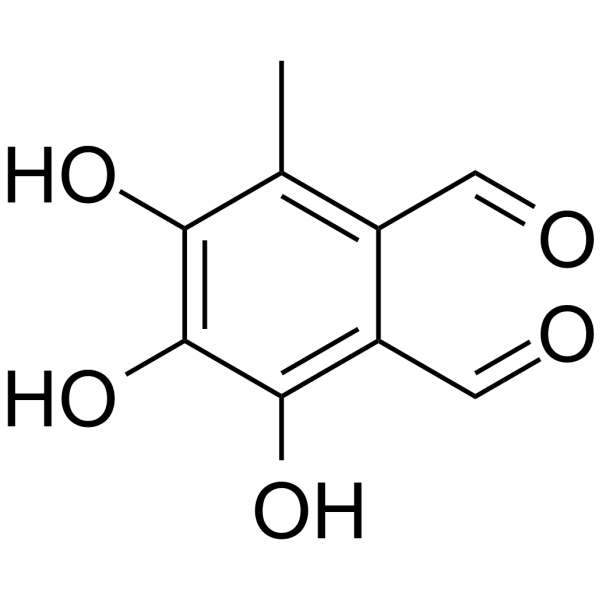
- HY-W099538
-
|
Dilauryl 3,3'-Thiodipropionate
|
Biochemical Assay Reagents
|
Others
|
|
Dilauryl thiodipropionate (DLTDP), which is a sulfur-containing antioxidant commonly used to stabilize polymers and plastics against degradation caused by heat, oxygen, and UV light, acts to scavenge free radicals and others that may cause polymer chain scission and cross-linked active substances, in addition, DLTDP has been used as an additive to lubricants, oils and other industrial fluids to improve their oxidation stability, the long hydrocarbon chain in DLTDP makes it low volatility and compatible with many materials and Good compatibility with substrates.
|
-
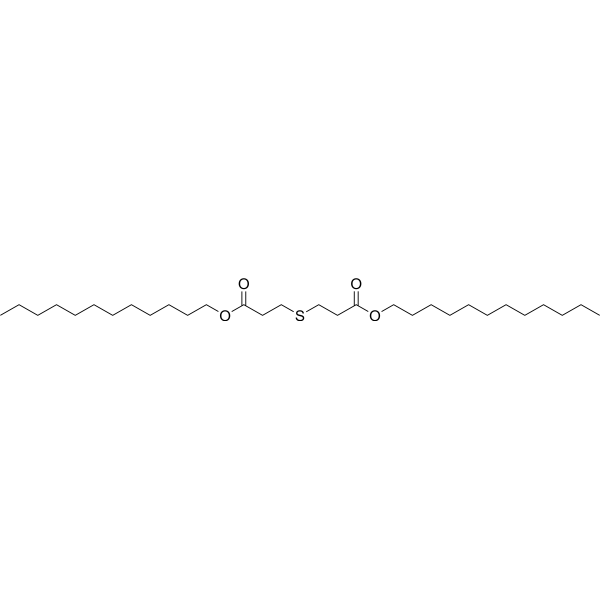
- HY-N7432
-
|
|
Antibiotic
Bacterial
Fungal
|
Infection
|
|
DIMBOA, an antibiotic, has antibacterial properties and inhibits bacteria such as Staphylococcus aureus and the mycotoxin-producing fungus Fusarium graminearum (which causes scab). DIMBOA exhibits strong free radical scavenging activity and weak iron(III) ion reducing activity, and has antioxidant activity. DIMBOA inhibits the biosynthesis and accumulation of toxic trichothecenes by affecting the expression of Tri6 and Tri5. DIMBOA reduces plant susceptibility to scab. DIMBOA also exhibits cytotoxicity to plant cells, causing plasmolysis, cell collapse, and cell rupture .
|
-
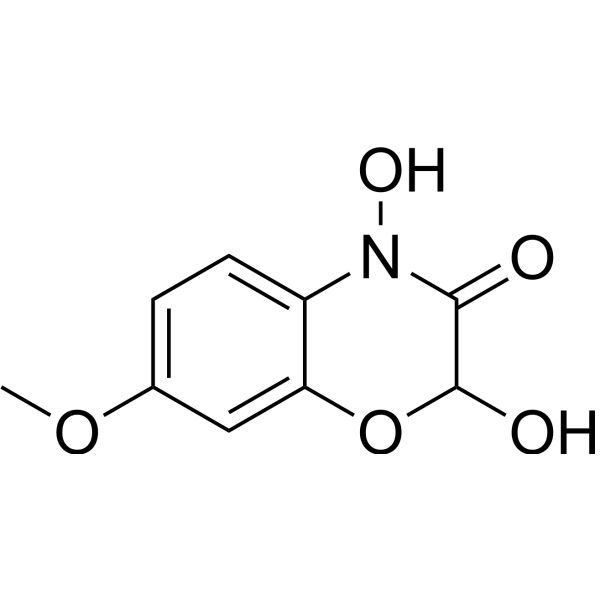
- HY-128463S
-
|
|
COX
Reactive Oxygen Species
|
|
|
N-tert-Butyl-α-phenylnitrone-d14 is the deuterium labeled N-tert-Butyl-α-phenylnitrone[1]. N-tert-Butyl-α-phenylnitrone is a nitrone-based free radical scavenger that forms nitroxide spin adducts. N-tert-Butyl-α-phenylnitrone inhibits COX2 catalytic activity. N-tert-Butyl-α-phenylnitrone has potent ROS scavenging, anti-inflammatory, neuroprotective, anti-aging and anti-diabetic activities, and can penetrate the blood-brain barrier[2][3][4][5].
|
-
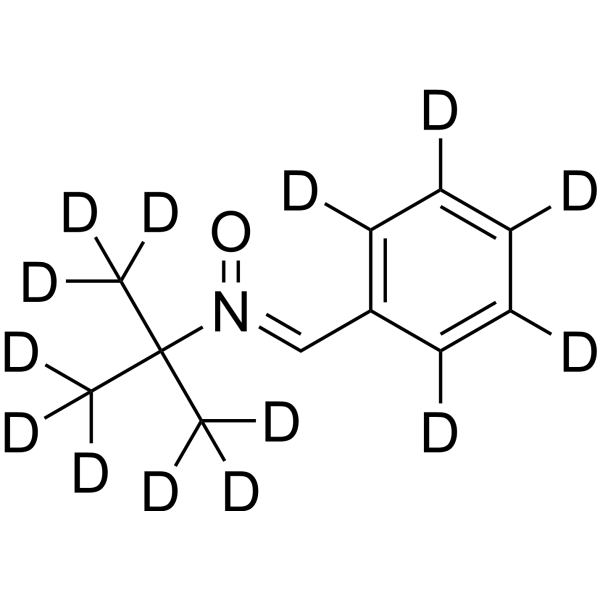
- HY-N10621
-
|
|
Others
|
Cancer
|
|
3,5-Dimethoxy-2,7-phenanthrenediol (compound 2) is a phenanthrene compound isolated from the roots of Combretum laxum. 3,5-Dimethoxy-2,7-phenanthrenediol is cytotoxic to human cancer cell lines 786-0, MCF-7 and NCI/ADR-RES, with IC50s of 73.26 μM, 118.40 μM and 83.99 μM respectively. 3,5-Dimethoxy-2,7-phenanthrenediol also has free radical scavenging activity with an IC50 of 20.4 μM .
|
-
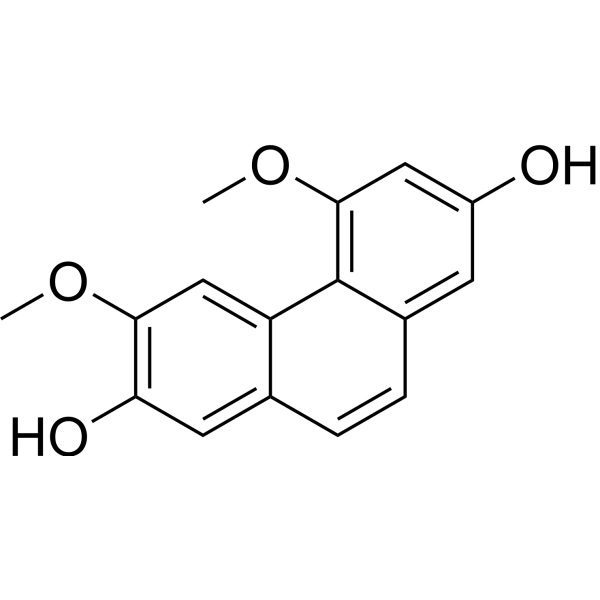
- HY-Y0320
-
|
DMSO
|
Bacterial
Cholinesterase (ChE)
|
Infection
Inflammation/Immunology
Cancer
|
Dimethyl sulfoxide (DMSO) is an aprotic solvent that dissolves polar and non-polar compounds, including water-insoluble therapeutic and toxic agents. Dimethyl sulfoxide (DMSO) has a strong affinity for water and can rapidly penetrate or enhance the penetration of other substances into biological membranes. Dimethyl sulfoxide also has potential free radical scavenging and anticholinesterase effects and may affect coagulation activity. Dimethyl sulfoxide also induces histamine release from mast cells but is thought to have low systemic toxicity. Dimethyl sulfoxide also exhibits antifreeze and antibacterial properties .
MCE provides Dimethyl sulfoxide that complies with the inspection standards (Ch.P) of Part 4 of the Chinese Pharmacopoeia (2020 Edition).
|
-

- HY-W011426
-
|
Propan-2-yl hexadecanoate
|
Biochemical Assay Reagents
Liposome
|
Others
|
|
Isopropyl palmitate is an fatty acid ester. Isopropyl palmitate can be used for design and characterization of bioactive bilayer films. The bilayer membrane not only has the ability to scavenge free radicals and inhibit lipid peroxidation, but also can inhibit the growth of known foodborne pathogens. Isopropyl palmitate can be used as an excipient, such as lubricant, oily carrier, solvent, controlled-release transdermal film. Pharmaceutical excipients, or pharmaceutical auxiliaries, refer to other chemical substances used in the pharmaceutical process other than pharmaceutical ingredients. Pharmaceutical excipients generally refer to inactive ingredients in pharmaceutical preparations, which can improve the stability, solubility and processability of pharmaceutical preparations. Pharmaceutical excipients also affect the absorption, distribution, metabolism, and elimination (ADME) processes of co-administered drugs .
|
-

| Cat. No. |
Product Name |
Type |
-
- HY-D0187
-
|
GSH; γ-L-Glutamyl-L-cysteinyl-glycine
|
Cosmetic Peptides
|
|
L-Glutathione reduced (GSH; γ-L-Glutamyl-L-cysteinyl-glycine) is an endogenous antioxidant and is capable of scavenging oxygen-derived free radicals.
|
-
- HY-W015913
-
|
Sodium pyruvate
|
Biochemical Assay Reagents
|
|
Sodium 2-oxopropanoate (Sodium pyruvate), a three-carbon metabolite of Glucose, is a compound produced in the glycolytic pathway. Sodium 2-oxopropanoate is a free radical scavenger that can scavenge ROS .
|
-
- HY-W099538
-
|
Dilauryl 3,3'-Thiodipropionate
|
Biochemical Assay Reagents
|
|
Dilauryl thiodipropionate (DLTDP), which is a sulfur-containing antioxidant commonly used to stabilize polymers and plastics against degradation caused by heat, oxygen, and UV light, acts to scavenge free radicals and others that may cause polymer chain scission and cross-linked active substances, in addition, DLTDP has been used as an additive to lubricants, oils and other industrial fluids to improve their oxidation stability, the long hydrocarbon chain in DLTDP makes it low volatility and compatible with many materials and Good compatibility with substrates.
|
-
- HY-Y0320
-
|
DMSO
|
Co-solvents
|
Dimethyl sulfoxide (DMSO) is an aprotic solvent that dissolves polar and non-polar compounds, including water-insoluble therapeutic and toxic agents. Dimethyl sulfoxide (DMSO) has a strong affinity for water and can rapidly penetrate or enhance the penetration of other substances into biological membranes. Dimethyl sulfoxide also has potential free radical scavenging and anticholinesterase effects and may affect coagulation activity. Dimethyl sulfoxide also induces histamine release from mast cells but is thought to have low systemic toxicity. Dimethyl sulfoxide also exhibits antifreeze and antibacterial properties .
MCE provides Dimethyl sulfoxide that complies with the inspection standards (Ch.P) of Part 4 of the Chinese Pharmacopoeia (2020 Edition).
|
-
- HY-W011426
-
|
Propan-2-yl hexadecanoate
|
Drug Delivery
|
|
Isopropyl palmitate is an fatty acid ester. Isopropyl palmitate can be used for design and characterization of bioactive bilayer films. The bilayer membrane not only has the ability to scavenge free radicals and inhibit lipid peroxidation, but also can inhibit the growth of known foodborne pathogens. Isopropyl palmitate can be used as an excipient, such as lubricant, oily carrier, solvent, controlled-release transdermal film. Pharmaceutical excipients, or pharmaceutical auxiliaries, refer to other chemical substances used in the pharmaceutical process other than pharmaceutical ingredients. Pharmaceutical excipients generally refer to inactive ingredients in pharmaceutical preparations, which can improve the stability, solubility and processability of pharmaceutical preparations. Pharmaceutical excipients also affect the absorption, distribution, metabolism, and elimination (ADME) processes of co-administered drugs .
|
| Cat. No. |
Product Name |
Target |
Research Area |
-
- HY-D0187
-
-
- HY-P1934A
-
|
|
Fungal
IFNAR
Reactive Oxygen Species
|
Infection
Inflammation/Immunology
Cancer
|
|
Cyclo(L-Phe-L-Pro), isolated from Pseudomonas fluorescens and Pseudomonas alcaligenes cell-free culture supernatants is an antifungal cyclic dipeptide . Cyclo(L-Phe-L-Pro) inhibits IFN-β production by interfering with retinoic-acid-inducible gene-I (RIG-I) activation . Cyclo(L-Phe-L-Pro) exhibits free-radical scavenging activity with the IC50 of 24 µM in the DPPH assay .
|
-
- HY-P4531
-
|
|
Opioid Receptor
|
Neurological Disease
|
|
H-Ser-Tyr-OH is a dipeptide consisting of glutamic acid, glycine and histidine. H-Ser-Tyr-OH can form a copper(II) complex with copper ions to form a strong free radical scavenging activity. H-Ser-Tyr-OH also increases the intracellular uptake of the delta opioid receptor ligand deltorphin .
|
| Cat. No. |
Product Name |
Category |
Target |
Chemical Structure |
-
- HY-N3220
-
-

-
- HY-N7518
-
-

-
- HY-N3554
-
-

-
- HY-N0403
-
-

-
- HY-133183
-
-

-
- HY-N0026
-
-

-
- HY-N0499A
-
-

-
- HY-D0187
-
-

-
- HY-N4246
-
-

-
- HY-N2628
-
-

-
- HY-N8169
-
-

-
- HY-N10176
-
-

-
- HY-W015913
-
-

-
- HY-121811
-
-

-
- HY-130294
-
-

-
- HY-N8846
-
-

-
- HY-N1521
-
-

-
- HY-B0704
-
-

-
- HY-N3138
-
-

-
- HY-W714006
-
-

-
- HY-N0513
-
-

-
- HY-N8375
-
-

-
- HY-N10294
-
-

-
- HY-P1934A
-
-

-
- HY-N7648
-
-

-
- HY-N3421
-
-

-
- HY-142125
-
-

-
- HY-N6937
-
-

-
- HY-116866
-
|
|
Structural Classification
Natural Products
Microorganisms
Source classification
|
Lipoxygenase
Fungal
|
|
Sclerotiorin is a reversible and uncompetitive inhibitor against soybean lipoxygenase-1 (LOX-1) (IC50: 4.2 μM). Sclerotiorin also shows antioxidant activity by scavenging free radical (ED50: 0.12 μM), and nonenzymatic lipid peroxidation inhibition activity. Sclerotiorin has antifungal activity, and also inhibits platelet aggregation. Sclerotiorin can be purified from the fermented broth of Penicillium frequentans .
|
-

-
- HY-W018643
-
-

-
- HY-N0241
-
-

-
- HY-N10295
-
-

-
- HY-N7432
-
-

-
- HY-N10621
-
|
|
Structural Classification
Combretaceae
Phenols
Polyphenols
Plants
Quisqualis indica Linn.
|
Others
|
|
3,5-Dimethoxy-2,7-phenanthrenediol (compound 2) is a phenanthrene compound isolated from the roots of Combretum laxum. 3,5-Dimethoxy-2,7-phenanthrenediol is cytotoxic to human cancer cell lines 786-0, MCF-7 and NCI/ADR-RES, with IC50s of 73.26 μM, 118.40 μM and 83.99 μM respectively. 3,5-Dimethoxy-2,7-phenanthrenediol also has free radical scavenging activity with an IC50 of 20.4 μM .
|
-

-
- HY-Y0320
-
|
DMSO
|
Microorganisms
Source classification
|
Bacterial
Cholinesterase (ChE)
|
Dimethyl sulfoxide (DMSO) is an aprotic solvent that dissolves polar and non-polar compounds, including water-insoluble therapeutic and toxic agents. Dimethyl sulfoxide (DMSO) has a strong affinity for water and can rapidly penetrate or enhance the penetration of other substances into biological membranes. Dimethyl sulfoxide also has potential free radical scavenging and anticholinesterase effects and may affect coagulation activity. Dimethyl sulfoxide also induces histamine release from mast cells but is thought to have low systemic toxicity. Dimethyl sulfoxide also exhibits antifreeze and antibacterial properties .
MCE provides Dimethyl sulfoxide that complies with the inspection standards (Ch.P) of Part 4 of the Chinese Pharmacopoeia (2020 Edition).
|
-

| Cat. No. |
Product Name |
Chemical Structure |
-
- HY-W015913S
-
|
|
|
Sodium 2-oxopropanoate- 13C3 is the 13C-labeled Sodium 2-oxopropanoate. Sodium 2-oxopropanoate (Sodium pyruvate), a three-carbon metabolite of Glucose, is a compound produced in the glycolytic pathway. Sodium 2-oxopropanoate is a free radical scavenger that can scavenge ROS[1][2].
|
-

-
- HY-D0187S
-
|
|
|
L-Glutathione reduced- 13C2, 15N is the 13C- and 15N-labeled L-Glutathione reduced. L-Glutathione reduced (GSH) is an endogenous antioxidant and is capable of scavenging oxygen-derived free radicals.
|
-

-
- HY-W015913S1
-
|
|
|
Sodium 2-oxopropanoate-d3 is the deuterium labeled Sodium 2-oxopropanoate[1]. Sodium 2-oxopropanoate (Sodium pyruvate), a three-carbon metabolite of Glucose, is a compound produced in the glycolytic pathway. Sodium 2-oxopropanoate is a free radical scavenger that can scavenge ROS[2][3].
|
-

-
- HY-W015913S3
-
|
|
|
Sodium 2-oxopropanoate- 13C is the 13C labeled Sodium 2-oxopropanoate[1]. Sodium 2-oxopropanoate (Sodium pyruvate), a three-carbon metabolite of Glucose, is a compound produced in the glycolytic pathway. Sodium 2-oxopropanoate is a free radical scavenger that can scavenge ROS[2][3].
|
-

-
- HY-W015913S4
-
|
|
|
2-Oxopropanoate- 13C5 (sodium) is the 13C labeled Sodium 2-oxopropanoate[1]. Sodium 2-oxopropanoate (Sodium pyruvate), a three-carbon metabolite of Glucose, is a compound produced in the glycolytic pathway. Sodium 2-oxopropanoate is a free radical scavenger that can scavenge ROS[2][3].
|
-

-
- HY-D0187S6
-
|
|
|
L-Glutathione reduced- 15N (GSH- 15N; γ-L-Glutamyl-L-cysteinyl-glycine- 15N) is 15N-labeled L-Glutathione reduced (HY-D0187). L-Glutathione reduced (GSH; γ-L-Glutamyl-L-cysteinyl-glycine) is an endogenous antioxidant that scavenges oxygen free radicals.
|
-

-
- HY-128463S
-
|
|
|
N-tert-Butyl-α-phenylnitrone-d14 is the deuterium labeled N-tert-Butyl-α-phenylnitrone[1]. N-tert-Butyl-α-phenylnitrone is a nitrone-based free radical scavenger that forms nitroxide spin adducts. N-tert-Butyl-α-phenylnitrone inhibits COX2 catalytic activity. N-tert-Butyl-α-phenylnitrone has potent ROS scavenging, anti-inflammatory, neuroprotective, anti-aging and anti-diabetic activities, and can penetrate the blood-brain barrier[2][3][4][5].
|
-

| Cat. No. |
Product Name |
|
Classification |
-
- HY-131803
-
|
|
|
Azide
|
|
Urolignoside is an antioxidant with free radical scavenging activity. Urolignoside potently scavenges DPPH radical, and exhibits antioxidant to β-carotene-lineoleate model . 3'-Azido-3'-deoxyguanosine is a click chemistry reagent, it contains an Azide group and can undergo copper-catalyzed azide-alkyne cycloaddition reaction (CuAAc) with molecules containing Alkyne groups. Strain-promoted alkyne-azide cycloaddition (SPAAC) can also occur with molecules containing DBCO or BCN groups.
|
Your information is safe with us. * Required Fields.
Inquiry Information
- Product Name:
- Cat. No.:
- Quantity:
- MCE Japan Authorized Agent:










































































